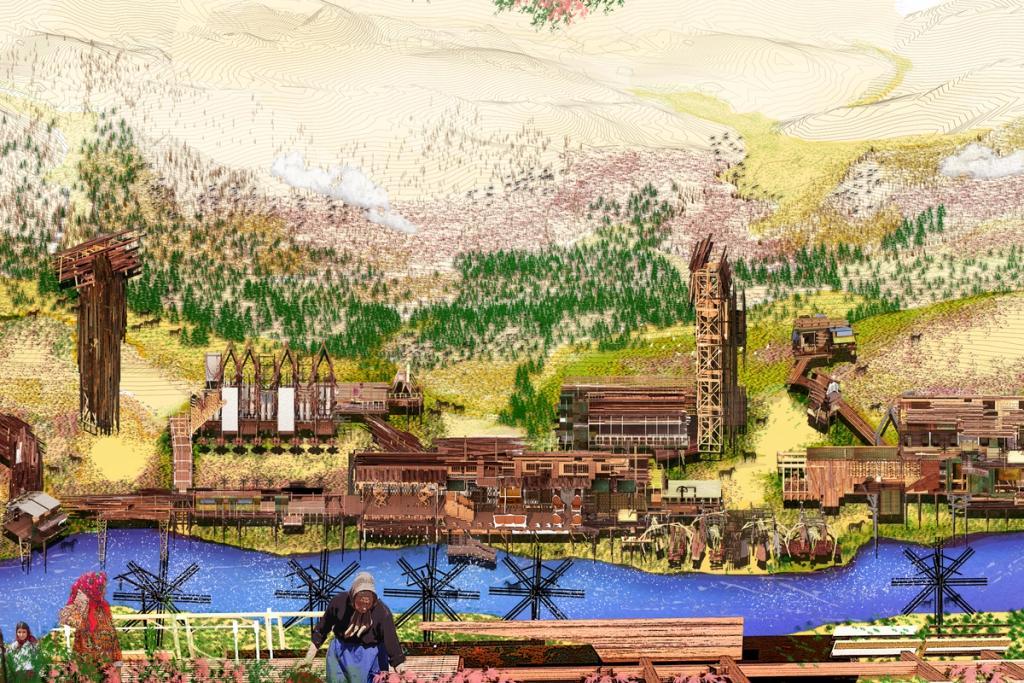Ecological Treasures of Baia and Roma
Adrian-Calin Paul
In the context of "Ecological Treasures," the notion of a scar refers to the environmental and social traumas inflicted upon the Roma community of Baia, Maramureș, by the local government and the timber mafia. The construction of a train track for an ex-Soviet smelter displaced the Roma from their nomadic settlements to contaminated areas, while deforestation prevented their resettlement. To heal this scar, the plan involves using the Roma's ancestral knowledge to restore the forests by replanting with red dead nettle, a plant beneficial for soil regeneration, medicinal uses, and as food for both people and their draft horses. Architecturally, the project features an expandable, detachable structure along a forest river, enabling the Roma to stay mobile and address deforestation. The originality of the project sits in the repurposing of the dead wood from the timber mafia into new sustainable programmes and designs, to reintegrate the Roma as a vital part of Baia's social life and promoting environmental and social benefits.
After completing Part I, I spent two years at Falconer Chester Hall Architects, where I adapted to various aspects of project delivery, working closely with clients, contractors, and consultants. Participating in design team meetings, I gained insights into project masterplanning, procurement, and construction, emphasizing BREEAM benchmarks for sustainable architecture. This experience deepened my understanding of the RIBA Plan of Work, contractual issues, and project management. I contributed to planning applications, design, and technical detailing, and became proficient in software like Revit and Microstation. Simultaneously, I worked as a consultant for TruthBeTold Studio, specializing in pavilion architecture, mentoring students and assisting with project development to meet client criteria.




